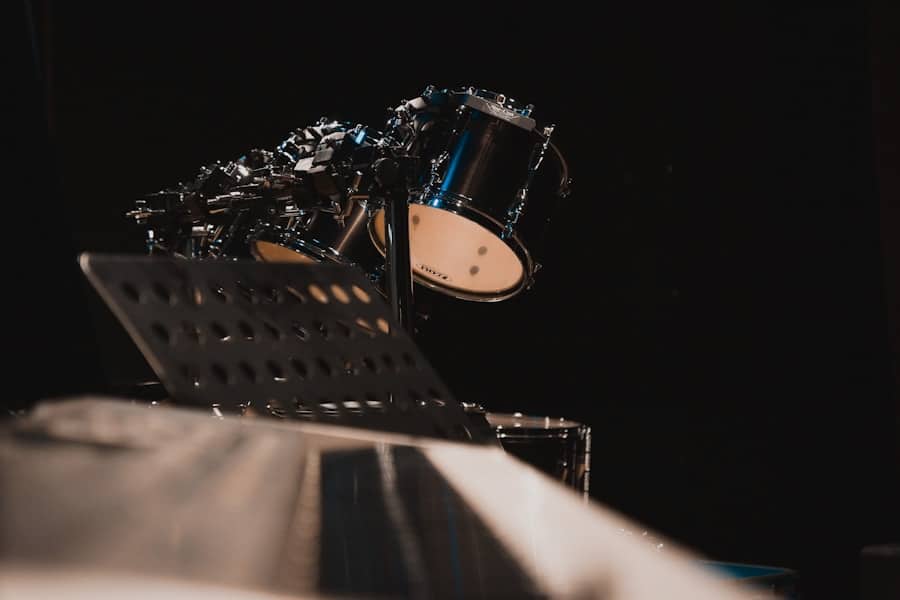Orbital mechanics, a branch of celestial mechanics, deals with the motions of objects in space under the influence of gravitational forces. This field is crucial for understanding how satellites, spacecraft, and celestial bodies interact with one another and their environments. The fundamental principles of orbital mechanics are rooted in Newton’s laws of motion and universal gravitation, which describe how objects move in response to forces acting upon them.
The study of these principles allows engineers and scientists to predict the trajectories of satellites, plan missions, and ensure that spacecraft can achieve their intended orbits. The significance of orbital mechanics extends beyond mere calculations; it encompasses the design and operation of satellite systems that are integral to modern life. From GPS navigation to weather forecasting and global communications, satellites play a pivotal role in various sectors.
Understanding the intricacies of orbital mechanics is essential for optimizing satellite deployment, ensuring that these systems function effectively and efficiently. As technology advances, the integration of artificial intelligence (AI) into orbital mechanics is transforming how we approach satellite deployment, making it more precise and adaptable to changing conditions.
Key Takeaways
- Orbital mechanics is the study of the motion of objects in space, including satellites, and is crucial for understanding and predicting their behavior.
- Artificial intelligence plays a significant role in satellite deployment by optimizing orbital trajectories, reducing fuel consumption, and improving overall mission efficiency.
- Advancements in orbital maneuvering with AI have led to more precise and efficient satellite positioning, enabling better communication, navigation, and Earth observation capabilities.
- AI-optimized orbital mechanics offer benefits such as extended satellite lifespan, reduced operational costs, and increased mission success rates.
- Despite its advantages, AI in orbital mechanics also presents challenges and limitations, including the potential for system errors and the need for continuous human oversight.
The Role of Artificial Intelligence in Satellite Deployment
Artificial intelligence has emerged as a transformative force in numerous fields, and satellite deployment is no exception. AI algorithms can analyze vast amounts of data quickly and accurately, enabling engineers to make informed decisions about satellite trajectories and deployment strategies. By leveraging machine learning techniques, AI can identify patterns in historical data, predict potential issues, and optimize the deployment process.
This capability is particularly valuable in scenarios where traditional methods may fall short due to the complexity and dynamic nature of space environments. One of the most significant applications of AI in satellite deployment is in mission planning. AI systems can simulate various scenarios, taking into account factors such as gravitational influences from celestial bodies, atmospheric drag, and potential collisions with other objects.
Additionally, AI can assist in real-time decision-making during deployment, allowing for adjustments based on live data feeds from sensors and telemetry systems. This adaptability is crucial for ensuring that satellites reach their intended orbits safely and efficiently.
Advancements in Orbital Maneuvering with AI
The integration of AI into orbital maneuvering represents a significant leap forward in the capabilities of satellite systems. Traditional methods of orbital maneuvering often rely on pre-defined algorithms and manual inputs from operators, which can be time-consuming and prone to human error. In contrast, AI-driven systems can autonomously execute complex maneuvers by continuously analyzing data from onboard sensors and external sources.
This real-time processing allows for more precise adjustments to a satellite’s trajectory, enhancing its ability to respond to unforeseen circumstances. For instance, AI can optimize fuel consumption during orbital maneuvers by calculating the most efficient paths for adjustments. By minimizing fuel usage, satellites can extend their operational lifespans and reduce costs associated with resupply missions.
Moreover, AI can facilitate collision avoidance maneuvers by predicting potential threats from space debris or other satellites. By continuously monitoring the environment and making instantaneous decisions, AI enhances the safety and reliability of satellite operations.
Benefits of AI-Optimized Orbital Mechanics for Satellite Deployment
The benefits of incorporating AI into orbital mechanics are manifold, particularly when it comes to satellite deployment. One of the most notable advantages is increased efficiency. AI algorithms can process data at speeds far beyond human capabilities, allowing for rapid analysis and decision-making.
This efficiency translates into shorter mission planning times and more effective use of resources during deployment. As a result, organizations can launch satellites more frequently and with greater precision. Additionally, AI-optimized orbital mechanics can lead to improved accuracy in satellite positioning.
By utilizing advanced predictive models, AI can account for various factors that influence a satellite’s trajectory, such as gravitational perturbations from nearby celestial bodies or atmospheric conditions. This level of precision is essential for applications like Earth observation or telecommunications, where even minor deviations from intended orbits can have significant consequences. Furthermore, the ability to adapt to changing conditions in real-time enhances the overall reliability of satellite operations.
Challenges and Limitations of AI in Orbital Mechanics
Despite the promising advancements brought about by AI in orbital mechanics, several challenges and limitations persist. One major concern is the reliance on data quality and availability. AI algorithms are only as good as the data they are trained on; if the input data is inaccurate or incomplete, the resulting predictions may be flawed.
In the context of space operations, where conditions can change rapidly and unpredictably, ensuring high-quality data is paramount. Another challenge lies in the complexity of developing robust AI models that can handle the multifaceted nature of orbital mechanics. The interactions between various forces acting on a satellite are intricate, and creating algorithms that can accurately model these interactions requires significant expertise and computational resources.
Additionally, there is a risk that over-reliance on AI could lead to complacency among human operators.
Future Implications of AI in Satellite Deployment
Looking ahead, the implications of AI in satellite deployment are profound. As technology continues to evolve, we can expect even greater integration of AI into various aspects of space operations. One potential development is the use of autonomous satellites capable of making independent decisions regarding their orbits and maneuvers.
Such systems could revolutionize how we approach satellite constellations, allowing for dynamic reconfiguration based on real-time needs or environmental changes. Moreover, advancements in AI could facilitate more extensive collaboration between satellites in orbit. For instance, swarms of small satellites could work together to achieve collective objectives, such as Earth observation or communication relay tasks.
By employing AI algorithms that enable these satellites to communicate and coordinate their actions autonomously, we could see significant improvements in efficiency and effectiveness across various missions.
Ethical Considerations in AI-Optimized Orbital Mechanics
As with any technological advancement, the integration of AI into orbital mechanics raises important ethical considerations that must be addressed. One primary concern is the potential for unintended consequences resulting from autonomous decision-making systems. If an AI-driven satellite were to misinterpret data or make an erroneous maneuver, it could pose risks not only to itself but also to other satellites and space assets in proximity.
Establishing robust safety protocols and fail-safes will be essential to mitigate these risks. Additionally, there are broader implications regarding data privacy and security in the context of satellite operations powered by AI. As satellites collect vast amounts of data about Earth and its inhabitants, ensuring that this information is handled responsibly becomes paramount.
Organizations must navigate the delicate balance between leveraging data for operational efficiency while respecting individual privacy rights and adhering to regulatory frameworks.
The Impact of AI on the Future of Satellite Deployment
The impact of artificial intelligence on satellite deployment is poised to reshape the landscape of orbital mechanics significantly. By enhancing efficiency, accuracy, and adaptability in mission planning and execution, AI technologies are enabling a new era of space exploration and utilization. As we continue to explore the potential applications of AI in this field, it is crucial to remain vigilant about the challenges and ethical considerations that accompany these advancements.
The future holds exciting possibilities for AI-optimized orbital mechanics, from autonomous satellites capable of independent decision-making to collaborative swarms working together seamlessly in orbit. As we navigate this evolving landscape, fostering a culture of responsible innovation will be essential to harnessing the full potential of AI while ensuring safety and ethical integrity in our endeavors beyond Earth’s atmosphere.
If you are interested in exploring the world of software for design and animation, you may want to check out



